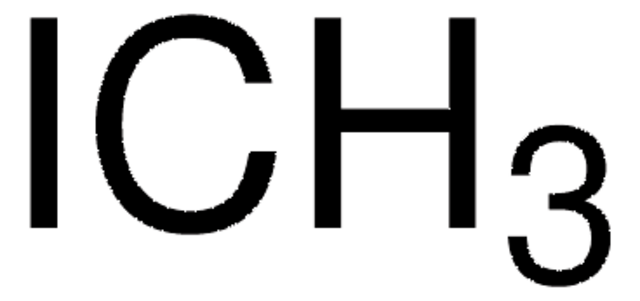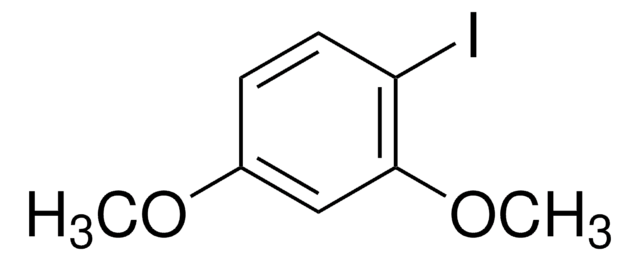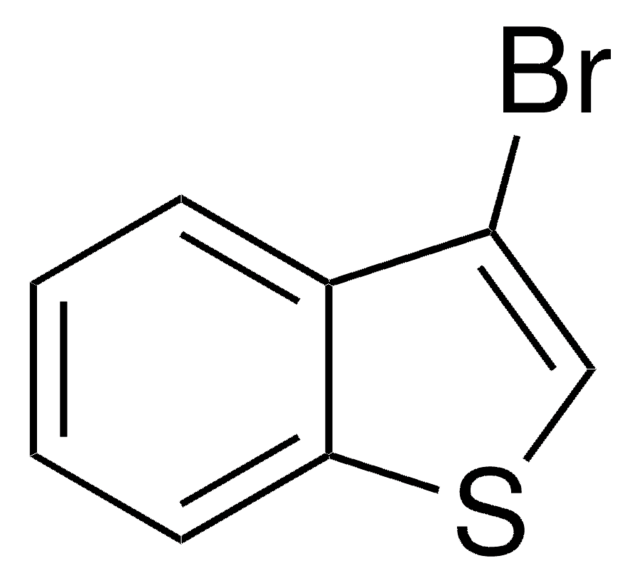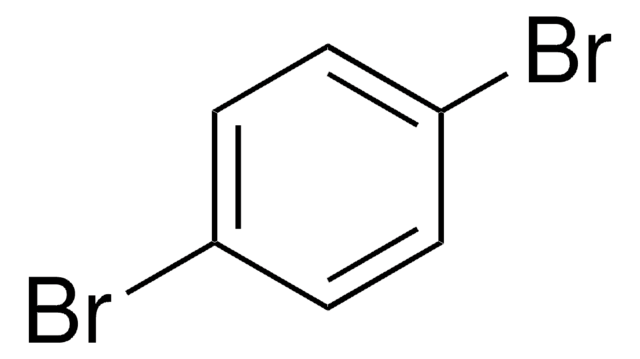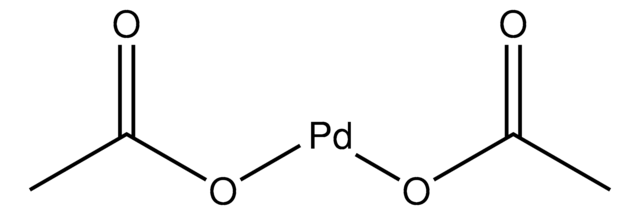All Photos(2)
About This Item
Linear Formula:
CH3C6H3Br2
CAS Number:
Molecular Weight:
249.93
EC Number:
MDL number:
UNSPSC Code:
12352100
PubChem Substance ID:
NACRES:
NA.22
Recommended Products
Quality Level
Assay
98%
form
liquid
refractive index
n20/D 1.602 (lit.)
bp
135-136 °C/35 mmHg (lit.)
mp
5-6 °C (lit.)
density
1.815 g/mL at 25 °C (lit.)
functional group
bromo
SMILES string
Cc1cc(Br)ccc1Br
InChI
1S/C7H6Br2/c1-5-4-6(8)2-3-7(5)9/h2-4H,1H3
InChI key
QKEZTJYRBHOKHH-UHFFFAOYSA-N
Application
2,5-Dibromotoluene has been used:
- as internal standard for quantification of cyanide and thiocyanate in human saliva by GC-MS
- in the preparation of 2,5-bis(4′-alkoxycarbonylphenyl)styrenes, monomers required for the synthesis of mesogen-jacketed liquid-crystal polymers
Signal Word
Warning
Hazard Statements
Precautionary Statements
Hazard Classifications
Eye Irrit. 2 - Skin Irrit. 2 - STOT SE 3
Target Organs
Respiratory system
Storage Class Code
10 - Combustible liquids
WGK
WGK 3
Flash Point(F)
235.4 °F - closed cup
Flash Point(C)
113 °C - closed cup
Personal Protective Equipment
dust mask type N95 (US), Eyeshields, Gloves
Regulatory Information
新产品
Choose from one of the most recent versions:
Already Own This Product?
Find documentation for the products that you have recently purchased in the Document Library.
Synthesis and characterization of mesogen-jacketed liquid-crystal polymers based on 2, 5-bis (4'-alkoxyphenyl) styrene.
Yu Z, et al.
Journal of Polymer Science Part A: Polymer Chemistry, 41(10), 1454-1464 (2003)
Buddha D Paul et al.
Journal of analytical toxicology, 30(8), 511-515 (2006-11-30)
A method is described for simultaneous determination of cyanide (CN) and thiocyanate (SCN) in human saliva, or oral fluid. SCN concentrations in body fluids appeared to be important in classifying patients as smokers or nonsmokers, in determining some clinical conditions
Ekaterina A Dolgopolova et al.
Journal of the American Chemical Society, 141(13), 5350-5358 (2019-03-07)
Electronic structure modulation of metal-organic frameworks (MOFs) through the connection of linker "wires" as a function of an external stimulus is reported for the first time. The established correlation between MOF electronic properties and photoisomerization kinetics as well as changes
Our team of scientists has experience in all areas of research including Life Science, Material Science, Chemical Synthesis, Chromatography, Analytical and many others.
Contact Technical Service